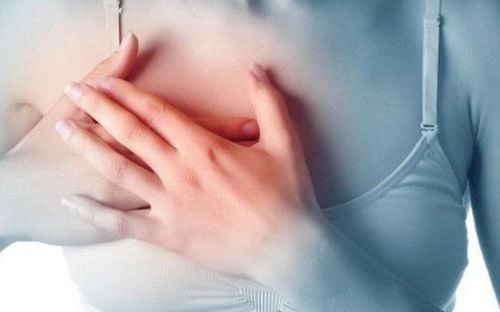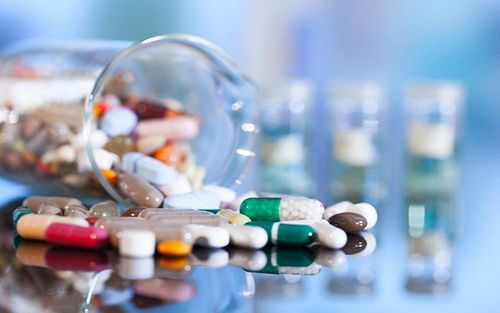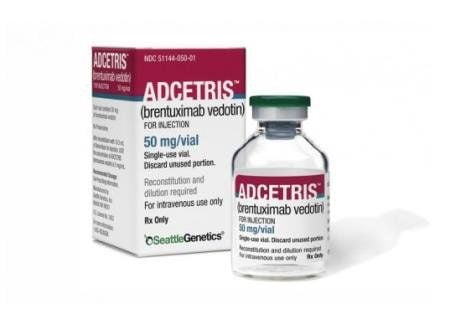This is an automatically translated article.
Nolvadex belongs to the class of anti-cancer and immune-system drugs, and is indicated for the treatment of oestrogen-dependent breast cancer in women with metastatic disease. To better understand what drug Nolvadex is? What are the uses of Nolvadex? What are the points to pay attention to when using? The following article will help you better understand the drug Nolvadex.1. What are the effects of Nolvadex?
Nolvadex has the main ingredient Tamoxifen, which belongs to the group of anti-cancer drugs and acts on the immune system. The drug is prepared in the form of 10mg and 20mg film-coated tablets (citrate salt form), manufactured by the British pharmaceutical company AstraZeneca.
Ingredients in 1 film-coated tablet Nolvadex include:
Tamoxifen citrate Ph.Eur. 30.4 mg (equivalent to 20 mg tamoxifen) and Tamoxifen citrate Ph.Eur. 15.2 mg (equivalent to 10 mg tamoxifen). Excipients: Lactose monohydrate, gelatin, corn starch, magnesium stearate, croscarmellose sodium type A, macrogol 300, hydroxypropylmethylcellulose 2910, titanium dioxide. Nolvadex is prescribed by doctors in the following cases:
Treatment of metastatic estrogen-dependent breast cancer in women. Adjunct to the treatment of estrogen-dependent breast cancer in women and, in selected cases, need to be supplemented with chemotherapy. Adjunctive treatment for women at high risk of cancer recurrence after primary breast cancer has been treated. It is also used to stimulate ovulation in women who are infertile due to anovulation.
2. How to use Nolvadex
2.1. Usage: Oral administration Do not crush or mix the drug with other mixtures 2.2. Dosage of Nolvadex: Adults (including the elderly): Dosage from 20 to 40 mg / day, taken once or divided into two times. The recommended dose is 20mg/day. The dose of 40mg/day is used only when the patient does not respond to the 20mg/day dose. Use in children: The use of Nolvadex-D in children is not recommended because efficacy and safety have not been established. Patients with renal impairment: No dose adjustment is required for patients with renal impairment. Hepatic Impairment: Because the drug is metabolized by the liver, caution should be exercised in patients with hepatic impairment. Patients with ovulatory infertility: Before initiating any course of treatment with Nolvadex, the possibility of pregnancy must be excluded. In women with regular menstrual periods, the initial course of treatment is 20 mg, and is given daily on the second, third, fourth and fifth days of the menstrual cycle. If this initial course of treatment is unsuccessful, subsequent courses can be increased to 40mg and then 80mg per day. In women who do not have regular periods, the initial course can be started on any day. If there is no evidence of ovulation, then a further course of treatment can be started after 45 days, with the dosage increased as above. If the patient responds to menstruation, then the next course of treatment is started on the second day of the cycle Patients on breast cancer prevention : Nolvadex-D treatment for primary prevention of breast cancer should only be be initiated by a physician experienced in prescribing for this indication. The recommended dose is 20 mg daily for 5 consecutive years for women at intermediate or high risk. 2.3. Overdose: Symptoms: tremor, fatigue, dizziness, increased reflexes. It has been reported in the literature that Nolvadex-D, when administered at doses several times the standard dose, may be associated with ECG prolongation of the QT interval. There is currently no specific antidote for overdose and treatment is symptomatic.
3. Contraindications of the drug Nolvadex
General contraindications: Pregnant women and perimenopausal patients must be carefully examined before treatment to exclude the possibility of pregnancy. Hypersensitivity to the active substance Tamoxifen or to any of the excipients listed above. Concomitant anastrozole therapy Infertility: Patients with a personal or family history of confirmed idiopathic venous thrombosis or a known genetic defect.
4. Notes when using Nolvadex
During the treatment of breast cancer with Nolvadex-D, some premenopausal patients may experience amenorrhea. In addition, an increase in the frequency of endometrial disorders including hyperplasia, polyps, endometrial cancer and uterine sarcomas (mostly malignant mixed Mullarian tumors) has been observed. associated with treatment with Nolvadex-D.
It is necessary to immediately monitor patients who have been taking Nolvadex-D who have abnormal gynecological symptoms, especially vaginal bleeding, or have menstrual disorders, vaginal discharge and symptoms such as: pelvic pain or heaviness.
In breast reconstruction with slow microsurgery: Nolvadex-D may increase the risk of complications on the microvascular graft. Venous thromboembolism (VTE): A 2- to 3-fold increased risk of VTE has been observed in healthy women using tamoxifen. Physicians should carefully review the patient's personal and family history of VTE. If the patient is at risk of thrombosis, the patient should be screened for predisposing factors for thrombosis, tamoxifen should be discontinued immediately and appropriate anticoagulation instituted. The decision to reintroduce tamoxifen should be based on the patient's overall risk; in selected patients, concomitant use of tamoxifen with prophylactic anticoagulation may be beneficial. All patients should contact their physician immediately if a patient develops any symptoms of VTE. Effects of the drug on the ability to drive and use machines. There is no evidence that Nolvadex-D impairs these activities.
5. Nolvadex side effects
Common : Hot flushes, headache, dizziness. Vaginal bleeding, vaginal discharge, vulvar itching. Skin reaction around the tumor. Digestive disorders . Some cases of pancreatitis.
Uncommon: Body fluid retention, hair loss. Skin rash, erythema multiforme, Stevens-Johnson syndrome, bullous pemphigus, angioedema. Decreased platelets, white blood cells, anemia. Visual disturbances, optic neuropathy and optic neuritis. Increased frequency of cerebrovascular accident, leg cramps. Uterine fibroids, endometriosis, hyperplasia, polyps, ovarian cysts, endometrial cancer & uterine sarcoma. Change in liver enzymes. Thrombosis due to thrombosis.
Rare: increased plasma triglycerides.
6. Interactions when using Nolvadex
When Nolvadex-D is used in combination with coumarin-type anticoagulants, the anticoagulant effect may be significantly increased. When initiating concomitant use of both drugs, the patient's condition should be carefully monitored. When using cytotoxic drugs with Nolvadex-D in combination for the treatment of breast cancer, the risk of thromboembolic events is increased. For this reason, venous thromboprophylaxis should be considered in breast cancer patients during combination chemotherapy.
Nolvadex D 20mg drug may interact with drugs:
Bromocriptin increases the concentration of tamoxifen in the blood serum Estrogen type drugs may reduce the therapeutic effect of tamoxifen. Allopurinol increases the hepatotoxicity of tamoxifen. Rifampicin, aminoglutethimide reduce serum concentrations of tamoxifen. Tamoxifen reduces serum letrozole concentrations.
Please dial HOTLINE for more information or register for an appointment HERE. Download MyVinmec app to make appointments faster and to manage your bookings easily.













